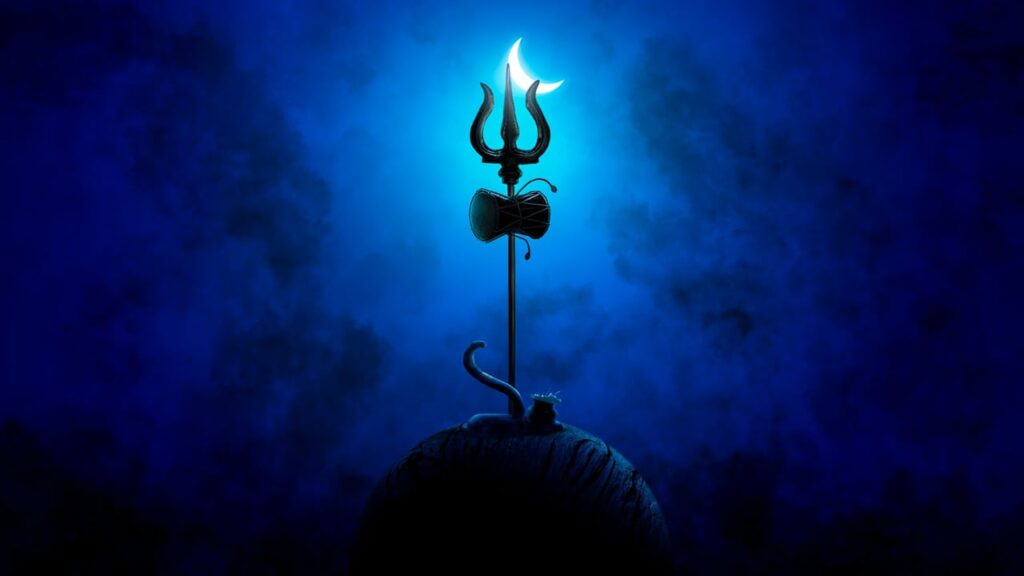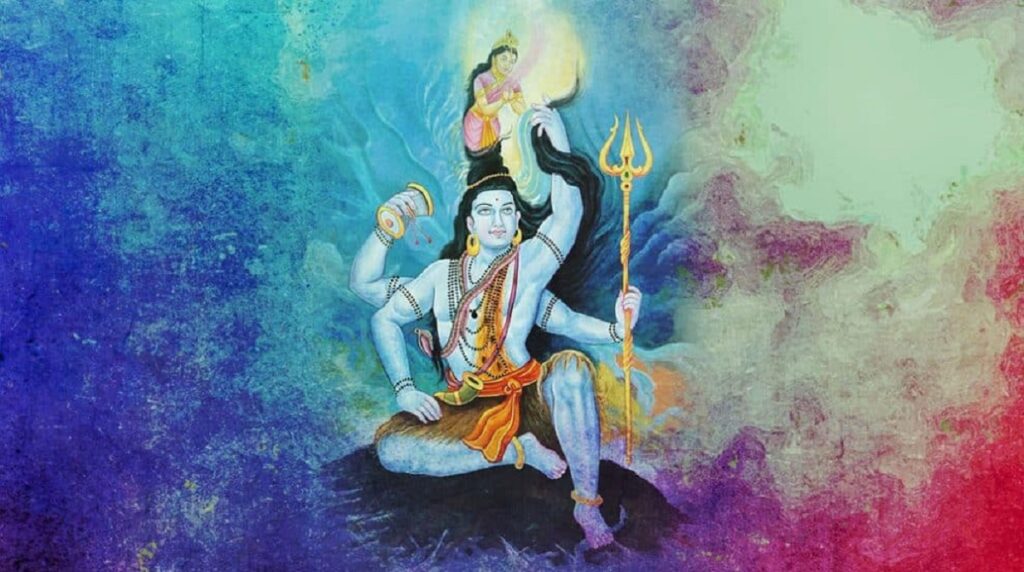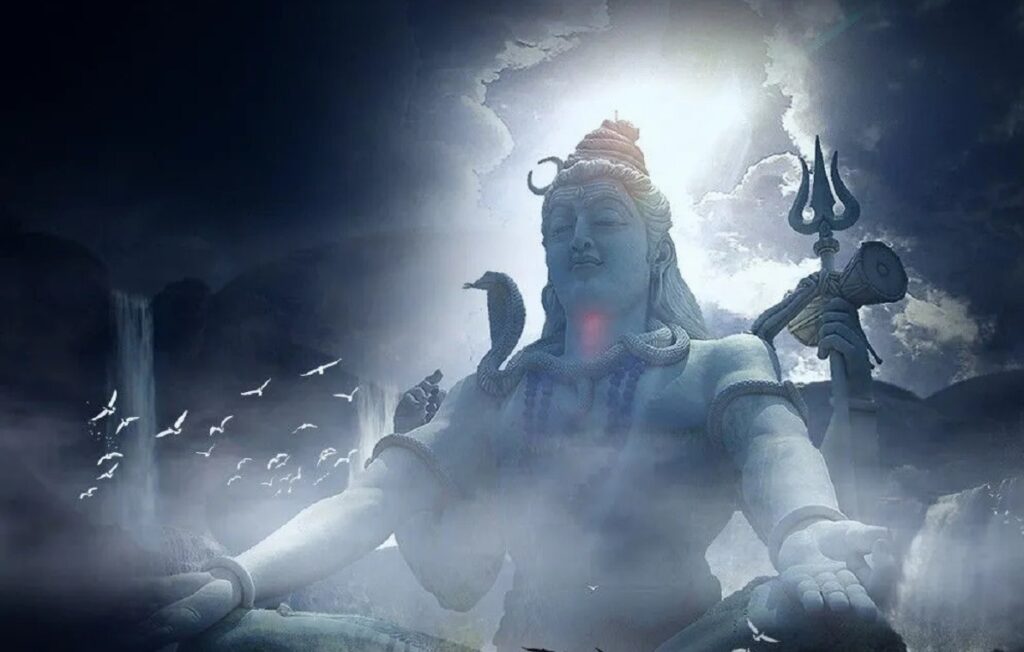Lord Shiva, the supreme deity in Hinduism, holds a significant and revered position in the hearts of millions of devotees. Known as the destroyer in the Holy Trinity, along with Brahma the creator, and Vishnu the preserver, Shiva symbolizes the cyclical nature of creation, preservation, and destruction. In this comprehensive exploration, we delve into the various aspects that define Lord Shiva, exploring his identity, appearance, symbolism, and the mythology surrounding him.
Who is Lord Shiva?
To understand Lord Shiva, one must explore the ancient scriptures and mythological tales that portray him as the ultimate cosmic force. Shiva, also known as Mahadeva or Rudra, is considered the supreme being, transcending the boundaries of time and space. His divine energy encompasses both the malevolent and benevolent forces, making him a complex and multifaceted deity. The various Puranas, particularly the Shiva Purana, highlight his role in the creation, preservation, and dissolution of the universe.
Appearance of Lord Shiva
Lord Shiva’s distinctive appearance is laden with symbolic significance, each aspect reflecting profound spiritual and cosmic truths.
The crescent moon on Lord Shiva’s head
The crescent moon adorning Lord Shiva’s matted locks is a celestial emblem that carries profound symbolism within Hindu mythology. According to the legend of the churning of the milky ocean (Samudra Manthan), a perilous poison emerged, threatening to engulf the cosmos. In a selfless act of cosmic compassion, Shiva consumed this deadly elixir to save the universe from destruction. As a result, a crescent moon took residence upon his forehead. This lunar ornament signifies the triumphant victory of divine consciousness over the poisonous forces of ignorance.

The crescent moon on Shiva’s head not only serves as a radiant jewel in Shiva’s divine attire but also stands as a perpetual reminder of the sacrificial acts that transcend the realms of mortal understanding, showcasing Shiva’s boundless compassion for the well-being of the cosmos.
The Trident or Trishul
The Trident, or Trishul, wielded by Lord Shiva, stands as an emblem of cosmic authority and spiritual prowess. This three-pronged weapon carries profound symbolic significance, representing the fundamental aspects of existence – creation, preservation, and destruction. The Trishul is not merely a physical instrument but a metaphysical embodiment of divine power and control over cosmic forces.

In Hindu mythology, it is often associated with the cosmic dance of Shiva, the Tandava, where the rhythmic movements of the Trishul symbolize the eternal ebb and flow of the universe. Beyond its martial connotations, the Trishul invites contemplation on the delicate balance of life’s cycles, urging devotees to navigate the realms of existence with awareness and purpose. As the quintessential symbol of Shiva’s omnipotence, the Trishul serves as a guiding beacon for seekers on the spiritual journey toward transcendence.
The Damru
The Damru, a small drum-shaped instrument held in the hand of Lord Shiva, resounds with profound cosmic significance in Hindu mythology. Shiva’s rhythmic beats on the Damru are believed to produce the primordial sound of AUM, the vibration that underlies the universe’s creation. The Damru symbolizes the cyclical nature of existence, echoing the cosmic dance of Shiva, known as the Tandava. The rhythmic beats are not only a musical manifestation but also a representation of the eternal rhythm of life, death, and rebirth.

As Shiva plays the Damru, it serves as a reminder of the interconnectedness of all things and the perpetual cosmic dance that unfolds in the grand tapestry of existence. Devotees perceive the Damru’s sound as a call to awaken spiritual consciousness and attune themselves to the cosmic vibrations that reverberate throughout the universe.
Snake around Shiva’s neck
The serpent coiled around Lord Shiva’s neck holds a profound symbolism that intertwines earthly and divine realms. This iconic representation originates from the mythological tales where Shiva, in his meditative trance, serves as the protector of the cosmic order. The snake encircling his neck symbolizes time’s eternal and cyclical nature, as well as the unending cycle of creation, preservation, and destruction.

The serpent, often identified as Adi Shesha or Vasuki, signifies the kundalini energy, awakening spiritual consciousness within the devotee. Moreover, the snake’s presence around Shiva’s neck serves as a metaphorical reminder that the Lord effortlessly tames the most formidable creatures, asserting his supremacy over both the visible and invisible dimensions of existence. In this depiction, Shiva’s tranquil demeanor in the face of the serpent reflects the harmony between the divine and the earthly, emphasizing the intricate balance within the cosmic dance of life.
Ganga flowing from Lord Shiva’s Head
The sacred Ganga, flowing from the matted locks atop Lord Shiva’s head, epitomizes a powerful and benevolent act of transcendence within Hindu mythology. According to ancient tales, the mighty Ganga, personified as the goddess, descended from the celestial realms to cleanse the earthly plane. However, her descent carried the potential for catastrophic destruction. In a gesture of boundless compassion, Shiva intercepted Ganga’s forceful descent by capturing her in his matted hair, transforming the destructive torrent into gentle streams. This divine interplay signifies Shiva’s role as a compassionate protector, mitigating the potentially destructive forces and channeling them into a source of spiritual purity.

The Ganga flowing from Shiva’s head becomes a sacred river, revered for its purifying properties and considered an embodiment of divine grace, emphasizing the seamless connection between the celestial and terrestrial realms. The imagery evokes a sense of spiritual cleansing and renewal, encapsulating the essence of Shiva’s benevolence towards his devotees and the cosmos at large.
Shiva’s Third Eye
Shiva’s third eye, a symbol of extraordinary insight and spiritual awakening, occupies a central place in Hindu mythology, portraying the deity’s omniscient and all-seeing nature. This mystical eye, often depicted on Shiva’s forehead, holds immense power and significance. According to ancient legends, Shiva’s third eye opens in moments of cosmic significance, unleashing a formidable force capable of annihilating ignorance and illusions.

The third eye represents the eye of wisdom, inner perception, and the ability to discern the truth beyond the apparent. Its opening signifies the destruction of duality and the revelation of higher knowledge. Shiva’s third eye is not merely a physical trait but a spiritual metaphor, encouraging devotees to seek enlightenment and perceive the world with a discerning eye that transcends the limitations of the material realm. In the cosmic dance of creation and destruction, the third eye remains a potent symbol, reminding seekers of the transformative power inherent in the pursuit of profound spiritual understanding.
Shiva’s Blue Throat
Shiva’s blue throat, often referred to as Neelakantha, unfolds a compelling narrative within Hindu mythology. According to ancient tales, during the churning of the milky ocean (Samudra Manthan), a potent poison emerged, threatening to engulf the universe. In a selfless act to protect creation, Shiva consumed the deadly elixir, saving the cosmos but leaving his throat tinged with a blue hue. This iconic imagery symbolizes the deity’s unwavering commitment to cosmic balance and his readiness to bear the burdens of the world.

Shiva’s blue throat serves as a poignant reminder of the sacrifices made for the greater good, depicting the profound depth of compassion and the transformative power embedded in the deity’s celestial nature. It resonates with the cosmic dance of creation and destruction, portraying Shiva as a divine alchemist who transmutes the poisonous challenges of existence into opportunities for spiritual growth and enlightenment.
Nandi the Bull
Nandi, the bull, emerges as a cherished symbol in the intricate tapestry of Lord Shiva’s divine retinue. Revered as Shiva’s loyal mount and devoted companion, Nandi holds a significant place in Hindu mythology. Depicted at the entrance of Shiva temples, this majestic creature represents strength, loyalty, and dharma. Nandi’s unwavering devotion to Lord Shiva goes beyond the physical, embodying the ideal qualities of a devout disciple.

In the cosmic dance of creation and destruction, Nandi stands as a steadfast witness and participant, symbolizing the inseparable bond between the divine and the earthly realms. His serene presence not only adds a sacred dimension to Shiva’s abode but also invites devotees to contemplate the virtues of devotion and fidelity on their spiritual journeys. Nandi, the humble bull, thus becomes a revered figure in the divine entourage, embodying the principles of faith and unwavering commitment to the cosmic order.
Shiva Sits on Tiger Skin
The image of Lord Shiva seated on a tiger skin carries profound symbolism, underscoring the divine triumph over primal instincts and the ephemeral nature of life. The tiger, a symbol of power, aggression, and sensuality, represents the untamed aspects of the material world. By choosing the tiger skin as his seat, Shiva conveys the message of transcending these primal forces through spiritual discipline and meditation. The act of sitting on the tiger’s skin signifies the deity’s mastery over desires and the ability to channel and control the raw energies of existence. It encourages devotees to confront their inner challenges and rise above the ferocity of worldly temptations, embodying the essence of asceticism and detachment.

Shiva’s choice of the tiger skin as his seat not only portrays him as the conqueror of the untamed, but also inspires seekers to navigate the jungle of desires with poise, resilience, and spiritual fortitude.
Conclusion and Final Words
Lord Shiva, the God of Gods, is a profound embodiment of cosmic energies, symbolizing the eternal cycle of creation, preservation, and destruction. His appearance, adorned with symbolic elements, invites devotees to contemplate the deeper spiritual meanings embedded in Hindu mythology. By understanding the significance of each aspect, one can embark on a spiritual journey that goes beyond the physical form of Lord Shiva, connecting with the timeless and boundless essence of the divine. As millions of devotees continue to worship and seek solace in the grace of Lord Shiva, the profound teachings and symbolism associated with this deity continue to inspire and guide spiritual seekers on their quest for higher consciousness.
Frequently Asked Questions (FAQs)
1) Who is Lord Shiva?
Answer: Lord Shiva is a principal deity in Hinduism, embodying the forces of creation, preservation, and destruction in the cosmic cycle.
2) What does the crescent moon on Shiva’s head symbolize?
Answer: The crescent moon symbolizes the triumph of divine consciousness over ignorance, stemming from the tale of the churning of the milky ocean.
3) What is the significance of the Trishul (Trident) in Shiva’s hand?
Answer: The Trishul represents the three fundamental aspects of existence – creation, preservation, and destruction – and signifies control over the three Gunas.
4) Why does Shiva hold a Damru?
Answer: Shiva’s Damru symbolizes the cosmic sound of AUM, reflecting the eternal rhythm of creation and destruction.
5) What does the snake around Shiva’s neck represent?
Answer: The serpent symbolizes time, the cyclical nature of creation, and the awakening of kundalini energy.
6) Why does the Ganga flow from Shiva’s head?
Answer: Shiva intercepted the descent of the Ganga to save the world, turning destructive forces into a purifying river.
7) What does Shiva’s third eye symbolize?
Answer: Shiva’s third eye represents inner perception, wisdom, and the ability to destroy ignorance.
8) Why is Shiva’s throat blue?
Answer: Shiva’s blue throat, Neelakantha, results from consuming the poison during the churning of the milky ocean, signifying sacrifice for cosmic balance.
9) Who is Nandi, and what is its significance?
Answer: Nandi is Shiva’s loyal bull, symbolizing strength, dharma, and unwavering devotion.
10) Why does Shiva sit on a tiger skin?
Answer: Shiva sitting on a tiger skin signifies mastery over primal instincts, encouraging spiritual discipline and detachment from worldly desires.


